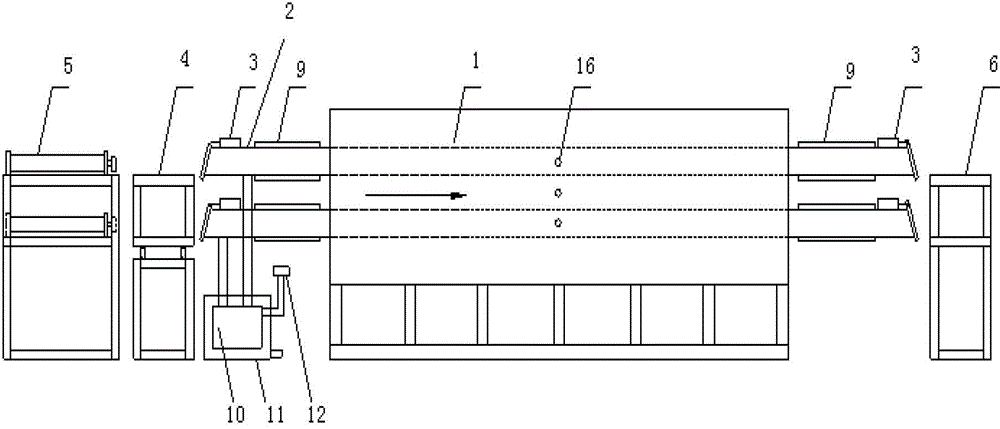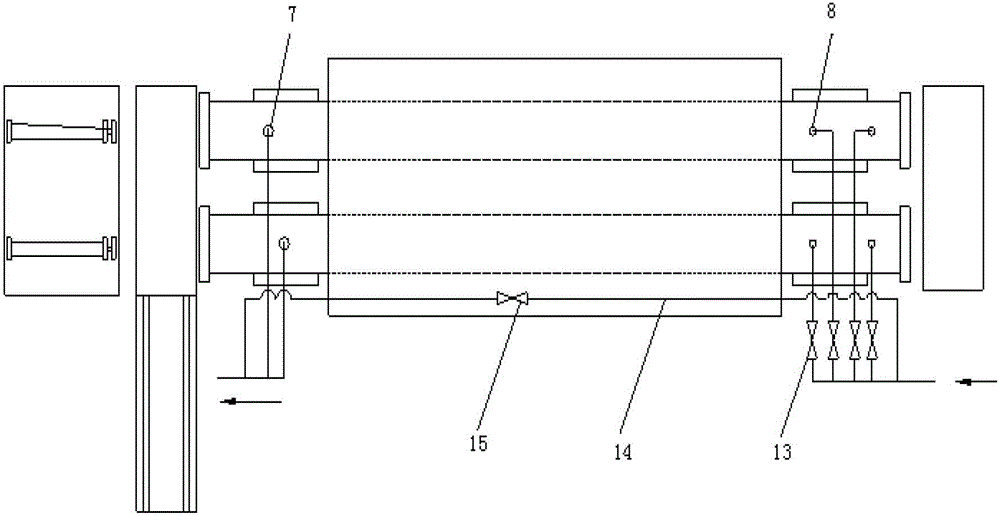Method for recovering tungsten-base alloy waste
A technology of tungsten-based alloy and scrap, which is applied in the field of recycling tungsten-based alloy scrap, can solve the problems of environmental pollution, high recycling cost, and high energy consumption, and achieve the effect of ensuring quality and effective reuse
- Summary
- Abstract
- Description
- Claims
- Application Information
AI Technical Summary
Problems solved by technology
Method used
Image
Examples
Embodiment 1
[0014] Example 1: First, use 5% HCL and 5% NaOH to clean the tungsten-based alloy waste and process the waste into small pieces; secondly, place the tray containing the tungsten-based alloy waste on the feeding platform 4 of the recycling furnace ; Turn on the system, the automatic furnace door 3 is opened, the waste tray is pushed into the feeding pipe 2 by the propulsion device 5, the automatic furnace door 3 is closed, and the temperature in the furnace is controlled to 600 ° C, the waste is oxidized in the recovery furnace, and the tungsten-based alloy waste is oxidized. Oxides are formed; after the reaction, the automatic furnace door 3 is opened, and the material is discharged; then the product is detected, and the qualified product is placed on the feeding platform 4 again, and is pushed into the feeding pipe 2 by the propulsion device 5. Nitrogen is introduced, and then the reducing gas hydrogen is introduced. The waste undergoes a reduction reaction in the recovery fur...
Embodiment 2
[0015] The steps of Example 2 and Example 1 are basically the same, except that the HCL concentration is 10%, the oxidation reaction temperature is 1100°C, and the reduction reaction temperature is 1200°C.
Embodiment 3
[0016] The steps of Example 3 are basically the same as those of Example 1, except that the HCL concentration is 7%, the oxidation reaction temperature is 700°C, and the reduction reaction temperature is 700°C.
PUM
 Login to View More
Login to View More Abstract
Description
Claims
Application Information
 Login to View More
Login to View More - R&D
- Intellectual Property
- Life Sciences
- Materials
- Tech Scout
- Unparalleled Data Quality
- Higher Quality Content
- 60% Fewer Hallucinations
Browse by: Latest US Patents, China's latest patents, Technical Efficacy Thesaurus, Application Domain, Technology Topic, Popular Technical Reports.
© 2025 PatSnap. All rights reserved.Legal|Privacy policy|Modern Slavery Act Transparency Statement|Sitemap|About US| Contact US: help@patsnap.com


